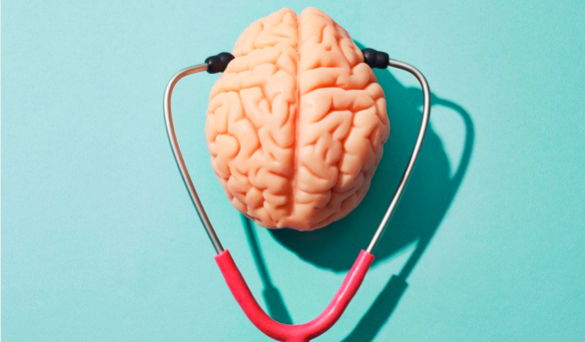Why is measuring mental well-being becoming critical and how can we make it as simple as checking temperature?
An article written by kenkou GmbH
Loneliness, stress, anxiety, and depression: the COVID-19 pandemic has been severely impacting our lives. Health challenges affecting ourselves or our loved ones can cause strong emotions, and public health actions such as social distancing can make us feel isolated. The pandemic intensifies mental health challenges that were widespread already before the crisis.
Loneliness, as an example, is not just a painful experience we may go through. It is worse for us than smoking, more harmful than obesity, and it comes with a risk of premature mortality. In the UK, for example, the surging number of lonely people and how feeling alone harms us was presented by a pre-pandemic report by the Jo Cox Commission on Loneliness. According to Making Caring Common, a project of the Harvard Graduate School of Education, 36% of all Americans feel “serious loneliness.”
The World Health Organization raises the alarm: Approximately 280 million people in the world have depression. Survey conducted by The Centers for Disease Control and Prevention (CDC) among adults aged ≥18 years across the United States in June 2020 suggests that 40.9% of respondents reported at least one adverse mental or behavioral health condition, including symptoms of anxiety disorder or depressive disorder (30.9%). The waiting lists for psychotherapy are getting longer. “With anxiety and depression on the rise during the pandemic, it has been challenging for people to get the help they need” – writes The New York Times in a recently published article.
These examples illustrate the scope of the issue and the need to support therapy when qualified help is hard to find.
Untapped power of HRV
In light of this high incidence of risk factors and conditions and lack of professional staff to address for help, what can individuals do to find out if they are at risk? Whereas a panic attack may be easy to identify, the slow rise in blood pressure or inflammation is difficult to notice. In this context, heart rate variability (HRV) comes into play. It is a promising biomarker of mental health resilience (MHR).
MHR influences mental well-being and vulnerability to psychiatric disorders. Whereas conventional measurement of resilience is based on subjective reports, HRV can act as an objective biological, physiological biomarker. A study published in the Journal of Affective Disorders showed that HRV might indeed serve as a global index of an individual’s flexibility and adaptability to stressors.

Effective therapy is available, but simple methods of diagnosis are lacking
Cognitive Behavioral Therapy (CBT) is the most widely-used therapy for a wide variety of mental health disorders. Research has shown it to be effective in treating panic disorders, phobias, social anxiety disorder, and generalized anxiety disorder, among many other conditions. CBT is a “talking therapy” that can help individuals manage their problems by changing the way they think and behave. The therapy aims to help individuals deal with overwhelming problems in a more positive way by breaking them down into smaller parts. CBT is based on the concept that one’s thoughts, feelings, physical sensations, and actions are interconnected, and that negative thoughts and feelings can trap individuals in a vicious cycle.
However, a diagnosis is needed to begin CBT, and this is not always easily available. Accurate tracking of selected biomarkers including HRV can be a game-changer.
As a noninvasive and easily applicable biomarker of MHR in real-life contexts, HRV allows for accurate stress level measurements for CBT. It helps in tracking recovery by identifying the change in behavioral patterns and treatment progress over time. In addition, it serves as an index of cognitive and affective self-regulation. Whereas negative emotions are related to reduced HRV and incoherent heart rhythm patterns, cardiac coherence refers to a high amplitude sinus-like heart rhythm that is characterized by increased vagal activity. This is associated with a psychological state of positive emotion.
HRV biofeedback (HRVB) devices display heart rhythms in real-time. They can be used to teach patients to generate coherent oscillations in the heart rate. A combination of CBT and HRV biofeedback training can help reduce anxiety symptoms while increasing HRV and the ability to sustain cardiac coherence.
When properly applied, digital technologies may prove to be groundbreaking in addressing the problem of early diagnosis and treatment of selected mental illnesses.
Technology developed by kenkou for precision biofeedback
kenkou – a Berlin based company founded in 2014 – is developing technologies that can revolutionize mobile health and vital-signs measurement worldwide. Together with a team of data scientists, the company is exploring the power of HRV measurement and biofeedback in mental health therapy, telemedicine, chronic diseases management and clinical trials running.
The science behind HRV: how does it work?
The time interval between the heartbeats of a healthy heart is constantly fluctuating. It indicates how well your body handles stress. Intervals over a given time period are referred to as HRV. A high HRV indicates that your body can cope well with stress, whereas a low HRV can be a symptom of fatigue, stress, or even illness. There are many values that can be used to measure HRV, including RMSSD and PNN50.
RMSSD (Root Mean Square of Successive Differences) shows how well an individual’s body is recovering from stress and reflects how well the parasympathetic nervous system can help it to regenerate and recover. A high level of stress relief is partly due to a high RMSSD.
PNN50 (correlated with Parasympathetic Nervous System activity) is the fraction of consecutive heartbeats with an interval greater than 50 milliseconds between them. A higher PNN50 value shows that an individual’s heart rate has drastically changed within a brief time period. For healthy individuals aged 25-74 years, the range is -3% to 43%.
Respiratory Sinus Arrhythmia (RSA) Amplitude, sometimes referred to as the HRV amplitude, is the change of heart rate believed to be caused by breathing. kenkou measures it by breaking up measurements into sections that match the expected breathing interval of the user – ten seconds in length –, calculating the difference between the maximum and minimum heart rates and averaging the results found for each of the sections.
kenkou computes a spectrum of indexes. This includes the Tension Index: this heart rate index is determined by the heart rate variability and is an objective indication of how much stress and tension there is in the body. Recovery Ability is related to an individual’s relaxation ability; it is measured by the parasympathetic nervous system, which controls the body while at rest. The easier it is for the body to calm down, the higher its stress resilience.
How do we make vital signs checkup as simple as possible, accessible to everyone?
kenkou’s team has developed a technology that enables vital signs measurement (including HRV) using just the smartphone camera. Its flash illuminates the fingertip, making changes in the blood vessels, which occur due to the natural heartbeat, visible for analysis. For example, when blood is pumped through the vessels, they appear darker; blood being pumped out leads to lighter vessels. Based on these changes, the heartbeat is detected, the data is analyzed, and the HRV is determined, providing the basis for computing further vital data indexes.
Readily accessible, easy-to-use technology from kenkou enhances treatment of mental health challenges in the pandemic and beyond. The company’s software development kit (SDK) enables cardiovascular vital signs analysis through third-party applications in the digital health and well-being industry as well as for insurance and pharmaceutical companies.
In a presentation for the upcoming Frontiers Health Global Hybrid Conference, which takes place November 11th and 12th, 2021, Elie Goldfarb, will share how real-time data contributes to value-based care, and its benefits for patients, including:
- Remote Patient Monitoring Technology
- Mental health wellbeing
- Heart Rate Variability (HRV) biofeedback exercises and breathing techniques
- Measurable outcomes



